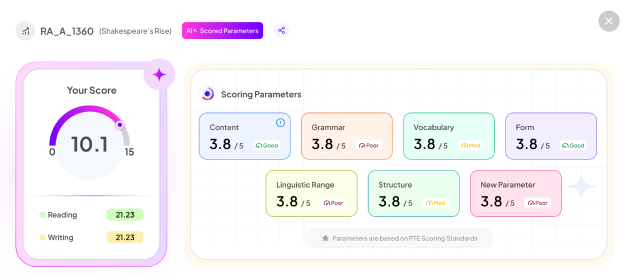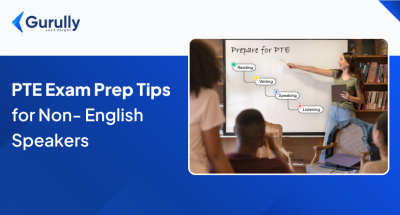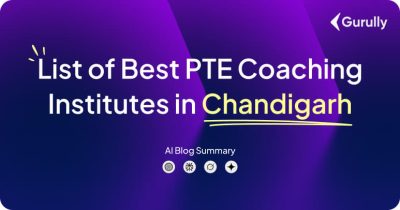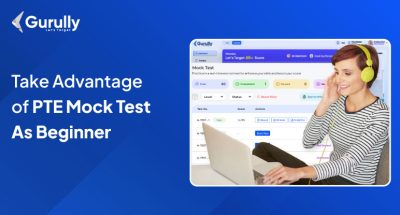Anyone preparing for the PTE eventually asks the same question: Should I spend more time on practice questions or full mock tests? It sounds like a simple comparison, but it isn’t, because both serve different purposes. Most students don’t realize that improvement doesn’t come from choosing one, but from knowing when and how to use both together.
Instead of treating them like alternatives, it’s worth looking at what each one actually helps you achieve.
Where Practice Questions Play a Big Role:
Practice questions are the smaller building blocks of PTE prep. You’re not taking the whole test—you’re working on one task at a time.
They’re helpful when you’re still learning the format or you’ve identified a weakness and want to fix it.
Here’s what they help you with:
Getting comfortable with each task format:
- Whether it’s Read Aloud, Describe Image, Fill in the Blanks, or Summarize Spoken Text, practice questions help you understand what the question demands.
Spotting patterns that help you score well:
- After giving a few attempts, you’ll start recognizing what Pearson’s scoring system rewards—fluency, clear structure, quick comprehension, and task completion.
Practicing high-weightage tasks until you get better:
- For example, Repeat Sentence and Reading Fill in the Blanks carry more scoring power. Practicing these repeatedly improves your score faster than random practice.
Enhances accuracy:
- Doing time-based practice will overcome the test day anxiety, along with learning the task in-depth.
Start your free PTE mock test with Gurully and get AI-powered analysis for a personalized journey.


- Kickstart your PTE prep with a free AI-scored mock test
- Boost your score with in-depth analysis & smart recommendations
Makes you prepared for weak areas:
- If the reading section is weak or the writing section makes you nervous, then breaking down tasks with repetitive attempts helps in improving weaker sections.
For a step-by-step approach, practice questions are really helpful. It helps in understanding the exam pattern in a better way.
How Full-Length PTE Mock Tests Make the Preparation Better:
PTE mock tests are real-time exam simulation that makes you ready for the test day. Mock tests help you with those things that isolated practice never exposes, such as:
How well you handle time pressure:
- Some students perform perfectly in practice questions but freeze or rush when the clock is ticking.
Whether your skills stay consistent for the full duration:
- PTE is not just a language test—it’s a stamina test. Listening near the end of the exam feels very different when you’re already mentally tired.
Understanding your scoring range
- You get feedback across Speaking, Writing, Reading, and Listening, which helps you understand whether you’re nearing your target or still have work to do.
Identifying real-world gaps in performance
For example:
- Are you speaking too fast?
- Are you rushing to read items?
- Are your listening summaries missing key points?
- Are you losing points to punctuation or grammar?
Mock tests offer a reality check. Sometimes it’s encouraging, sometimes uncomfortable, but always helpful.
So Which One Should You Focus On?
If you’re expecting a one-word answer, here’s the honest one:
Neither one is enough without the other; they work together like:
- Theory and application
- Practice and performance
- Skill building and score measurement
- Practice questions help you learn the game.
- Mock tests help you prove you can play it under pressure.
A Practical Way to Take Advantage of Both:
Instead of thinking in weeks or timelines, think in phases. Most students naturally move through these stages:
Phase 1: Learn and Build Familiarity
- Start with practice questions
- Understand each task type
- Try different strategies or templates
- Repeat the tasks that feel difficult
At this point, the goal isn’t scoring—it’s learning.
Phase 2: Test Your Ability in a Real-Exam Format
- Attempt a full mock test once you’re comfortable with the question types.
- Review the results carefully—not just the score.
- Identify what went wrong: timing, content, grammar, fluency, or comprehension?
This phase gives direction.
Phase 3: Mix Both Based on What You Need
- Use practice questions only for tasks where you made mistakes.
- Take mock tests occasionally to measure progress.
- Track what improves and what stays the same.
Some candidates need more speaking practice. Others need more reading technique refinement. So mix both and identify what you need to score high.
Phase 4: Use Mock Tests When You’re Near Exam-Ready
- Treat these as rehearsals
- Focus on maintaining consistency
- Avoid experimenting with new strategies
By now, mock tests shift from analysis mode to performance-readiness mode.
Why This Blended Approach Works
Using both methods means you’re covering every layer of preparation:
- Skill learning
- Confidence building
- Timing management
- Strategy execution
- Score evaluation
Students who rely only on mock tests often repeat the same mistakes. Students who rely only on practice questions often freeze in real-time conditions. But those who combine both tend to feel more prepared, calm, and predictable in performance.
In Gurully, you’ll find practice questions along with expert-designed full-length PTE mock tests to help you prepare with confidence. The platform gives you a real exam-like environment, so you’ll know exactly how the pressure feels on test day. You can also focus on individual sections to improve specific skills step by step. If you want more strategies, guidance, and preparation insights, make sure to subscribe to our YouTube channel and join our Telegram community.
FAQ:
Is PTE easier than a mock test?
What’s the difference between a mock test and a practice test?
Which mock test is best for PTE?
Is 79 PTE easy to score?
Can I go to Australia with a 50 PTE score?
Also Read:
- Which is the Best Free PTE Mock Test With Instant Results
- Know 10 Best PTE Institutes in Chandigarh – Start Your Prep For 2026






